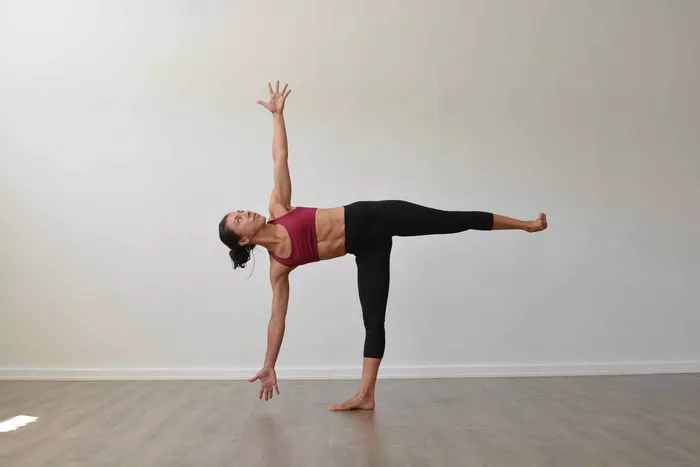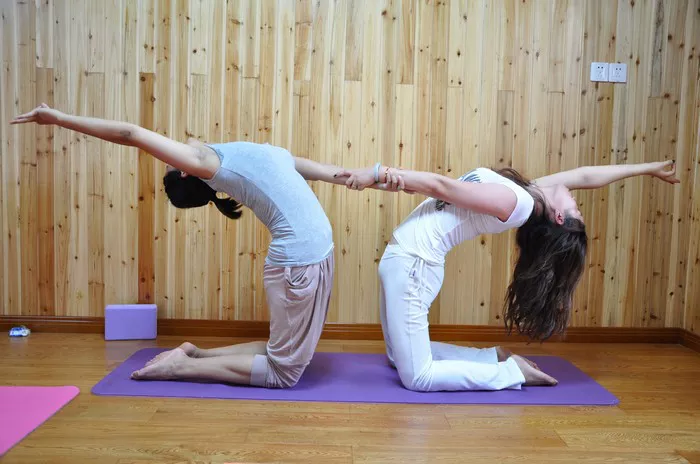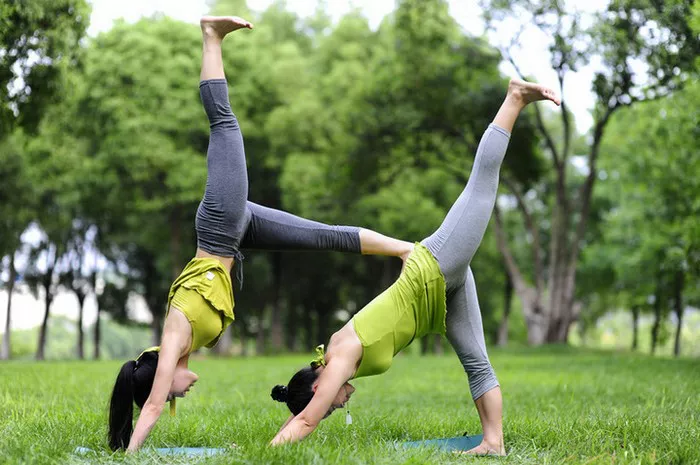Yoga is a practice that many people turn to for various reasons. Some seek physical benefits, while others pursue mental clarity or emotional balance. However, a common question arises: how long does it take for yoga to show results? The answer is not straightforward. It depends on several factors, including individual goals, consistency in practice, and the type of yoga being practiced. Generally, practitioners may start to notice physical and mental benefits within a few weeks, but significant changes often take several months.
Understanding Immediate Benefits
When you first start practicing yoga, you might notice immediate effects. These can include reduced stress, improved mood, and a sense of relaxation. These benefits can manifest as early as the first session. Physically, you may experience increased flexibility and a slight boost in strength. Many practitioners report feeling more energized and aware of their bodies. This awareness can lead to a deeper understanding of personal limits and capabilities. While these immediate results are promising, they may not be the long-term benefits that many seek.
The Importance of Consistency
For more substantial changes, consistency is key. Practicing yoga regularly can lead to more noticeable improvements over time. Within a month of regular practice, many individuals report increased flexibility and strength. They may find that poses that once felt challenging become more accessible. Mental clarity and emotional stability often improve as well. When you commit to a regular practice—ideally three to five times a week—you set the stage for significant benefits. Over the course of three to six months, most practitioners will experience improvements in posture, balance, and overall body awareness.
What Factors Influence the Timeline for Results?
To understand the timeline for yoga results, we must consider individual factors. Age, physical condition, and lifestyle can all play a role. Younger individuals may notice changes more quickly than older adults. This is often due to greater physical adaptability and recovery speed. However, age is not a limiting factor. Many older adults find incredible strength and flexibility through regular yoga practice, albeit at a different pace.
Setting Realistic Goals
Setting realistic goals is crucial for understanding your timeline. If your goal is to reduce stress, you might feel the effects of yoga almost immediately. However, if you aim to achieve advanced poses or significant strength gains, it may take longer. The type of yoga you practice also matters. More vigorous styles like Ashtanga or Vinyasa may yield faster physical results, while restorative practices may focus on mental and emotional benefits. It is essential to recognize that every person’s journey is unique. Embrace the process and celebrate small victories along the way.
Personal Commitment and Mindset
Your mindset and personal commitment significantly influence your yoga journey. Practicing yoga with an open mind and a willingness to learn can accelerate your progress. It is essential to approach your practice with patience. Each class offers new insights and challenges. It is also helpful to document your progress. Keeping a journal can help you track changes in flexibility, strength, and mood over time. This practice allows you to see how far you’ve come, which can be motivating.
How Does Yoga Affect Physical Fitness?
Yoga is an excellent way to enhance physical fitness. Many practitioners find that regular sessions improve their overall strength and flexibility. In just a few weeks of consistent practice, you may notice that you can stretch deeper and hold poses longer. These changes can lead to improved athletic performance in other activities. For those who engage in sports or weightlifting, yoga can help prevent injuries by increasing flexibility and balance.
Building Muscle Strength
Some styles of yoga, like Power Yoga or Hatha, focus more on building muscle strength. Over several months, you may notice more defined muscles and improved endurance. The various poses engage different muscle groups, which helps tone the body. Additionally, as you learn to hold poses for longer periods, your muscles adapt and strengthen. The combination of flexibility and strength can contribute to overall fitness and well-being.
Enhancing Cardiovascular Health
Yoga can also benefit your cardiovascular health. Certain styles, particularly those that are more dynamic, can raise your heart rate and improve circulation. Regular practice can help lower blood pressure and enhance heart health over time. Many practitioners find that they breathe more efficiently and deeply, which contributes to better oxygen flow in the body. These changes often become more noticeable after several weeks of regular practice.
How Does Yoga Impact Mental and Emotional Well-Being?
The mental and emotional benefits of yoga are often just as significant as the physical ones. Many people turn to yoga for its ability to reduce stress and promote mindfulness. After just a few sessions, you may notice a shift in your mental state. The act of focusing on your breath and being present in the moment can lead to a profound sense of calm.
Mindfulness and Stress Reduction
Yoga encourages mindfulness, which is essential for managing stress. When you practice regularly, you train your mind to focus and remain present. This shift can have lasting effects outside of the yoga studio. Over time, many practitioners report feeling more equipped to handle everyday stressors. This emotional resilience can improve relationships and enhance overall quality of life.
Long-Term Emotional Benefits
While immediate stress relief is possible, the long-term emotional benefits may take several months to develop. As you deepen your practice, you may find that your self-awareness increases. This awareness can lead to better emotional regulation and a more positive outlook on life. By committing to a regular practice, you create a foundation for emotional health that can last a lifetime.
What Role Does Yoga Style Play in Results?
Different styles of yoga can yield varying results. Understanding the nuances of each style can help you choose the best practice for your goals. For instance, Hatha yoga is often slower-paced, focusing on alignment and holding poses. This style can be beneficial for beginners, offering a strong foundation for future practice.
Dynamic vs. Restorative Yoga
Dynamic styles like Vinyasa or Ashtanga can lead to quicker physical results due to their focus on movement and strength. Practitioners may find that they build muscle and stamina faster through these practices. On the other hand, restorative yoga emphasizes relaxation and mindfulness, which can significantly benefit mental health. Choosing the right style for your needs can accelerate your journey.
Exploring Hybrid Practices
Many studios offer hybrid classes that combine elements of different styles. This approach can provide a well-rounded experience, allowing you to benefit from both strength and relaxation. Exploring various classes can help you find what resonates most with you. This exploration can also keep your practice fresh and engaging, which is essential for long-term commitment.
How Can You Maximize Your Yoga Practice for Faster Results?
To see results more quickly, consider incorporating a few strategies into your practice. First, consistency is crucial. Aim to practice yoga regularly, ideally several times a week. This commitment will help your body adapt and improve over time.
Combining Yoga with Other Activities
Incorporating other forms of exercise can also enhance your yoga practice. Activities like strength training, running, or swimming can complement your yoga sessions. This combination can lead to faster improvements in overall fitness and well-being.
Listening to Your Body
Listening to your body is vital for progress. Pay attention to how you feel during and after each session. If you notice discomfort or pain, it may be a sign to adjust your practice. Understanding your limits allows you to grow without risking injury. Additionally, incorporating rest days is essential for recovery and long-term success.
See Also: Yoga and Blood Pressure: Benefits and Practices
How Do Lifestyle Factors Affect Yoga Results?
Lifestyle factors play a significant role in the results you achieve through yoga. Nutrition, sleep, and stress management all contribute to how effectively your body responds to your practice. A balanced diet rich in nutrients can support your yoga journey by providing the energy needed for your sessions.
The Impact of Nutrition
Proper nutrition fuels your body and aids recovery. Consuming whole foods, staying hydrated, and minimizing processed foods can enhance your performance on the mat. Many practitioners find that a healthy diet leads to greater energy levels, making it easier to engage in regular practice.
Sleep and Recovery
Sleep is another crucial factor. Adequate rest allows your body to recover and repair itself. Poor sleep can hinder your progress and affect your motivation. Prioritizing sleep hygiene can help improve your overall well-being and enhance your yoga experience.
Conclusion
In conclusion, the timeline for yoga results varies from person to person. While some may experience immediate benefits, significant changes typically take several weeks to months. Factors such as individual goals, practice consistency, and lifestyle choices all play a role in the journey. It’s essential to set realistic expectations and embrace the process. Celebrate small victories, and remember that yoga is not just about physical results; it’s about overall well-being. By committing to your practice, you create the potential for lasting change in your life.
Each individual’s journey with yoga is unique. Approach your practice with patience and an open mind. Over time, you may discover that the results of yoga extend far beyond the mat, enriching your life in ways you never expected. So, how long does it take for yoga to show results? The answer lies within your journey.
You Might Be Interested In


















